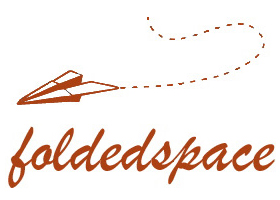I understand that digital effects in film are the new rage, that they have forever changed what we see on the screen, but that doesn’t mean I have to be happy about it. Old-fashioned models and puppets may have been obviously fake, but their limitations were, in some ways, good for film-makers.
For example, the space battles in the first three Star Wars films (which are actually the last three films, if you get my meaning) were created using models. The movement of the ships may seem odd at times, but it’s easy to follow the flow of battle, and it’s possible to become emotionally invested in the outcome. These battles, created without digital effects, are engaging and exciting.
Compare that with the last two Star Wars films (which are actually the first two films, if you get my meaning). The space battle in The Phantom Menace may be beautiful (though that’s arguable), but it’s dull. There are too many ships, and things happen too quickly. Worse is the land-based battle in Attack of the Clones. The battlefield explodes with a bewildering array of combatants, and laser fire flashes in every direction. The screen is filled with action. And it all sucks. There’s no narrative thread, so it makes no sense. The film-makers have become obsessed with their effects at the expense of their story.
One of the reasons I so dislike Peter Jackson’s Helms Deep is the endless digitally-created Battle of Helms Deep. It not only looks fake, it’s also overwhelming. I would have preferred a scene created without the use of digital effects. The constraints would have forced Peter Jackson to become more firmly grounded in reality, and to give the audience something with which to indetify.
Kris and I saw The Last Samurai the other night. It’s a decent film. The climactic battle scene is a mix of live-action combat and digital animation. The live-action stuff looks great, but the digital stuff looks to uniform, too artificial, too fake. It threw me out of the film.
Are the problems with digital effects primarily due to the infancy of the medium? Are the creators of these effects too tempted to go over the top, unable to show a modicum of restraint? Will things settle in the future? I hope so, but I�m not convinced.
The battles in The Return of the King feature a lot of digital work, too, but I’m happy to say that I was mostly impressed with the way in which it was handled. It seemed to enhance the battles rather than detract from them. I can’t imagine creating the overhead shots of the charge of the Rohirrim without using digital effects.
For my part, until the digital wizards learn to exercise restraint, I prefer my films to have very little digital enhancement. Part of what made Master and Commander so compelling was that the battles contained little, if any, digital work. (Maybe I�m wrong, but I don’t think so.) One reason that I’m reluctant to see Troy is the absurd scene from the preview in which we pan from viewing a single ship to viewing an evenly spaced fleet of perfectly identical vessels — the mythical “thousand ships” — an utter absurdity born of someone’s orgasmic passion for digital effects. It’s lame.

Well, for one thing, the space battles in the first three Star Wars films (or the last three, sir, if you catch my meaning, that is) are “visual effects”, they just aren’t “computer effects”.
I have long had a problem with the influx of Computer Animation too. My biggest problem, though, has always been the textures. Up until 2001 or so, I hadn’t ever seen a computer graphic that looked as good as old style stop-motion just because the textures were always so crappy looking. In the last few years though, texture-modelling seems to have made great leaps.
The battles in all three LOTR movies seem chaotic enough to be a realistic depiction of medieval style warfare. I see no problem (except for the lack of any dialogue or flow in the Helm’s Deep scene).
My biggest problem with the Two Towers, is that the entire movie is just a build up to the Helm’s Deep scene. It’s a 3.5 hour foreshadow, that gets incredibly tedious, especially to one who has all but memorized the book. Also, because they stripped so much away from the Frodo/Sam/Gollum story, it seems like there isn’t even a point to it. They’re just wandering around from place to place. Frankly, except for a few minor events, The Two Towers could basically be ignored and the plot would continue flawlessly from where FOTR ends. Peter Jackson stripped so much away and changed so much that it ceases to have any bearing on the story.